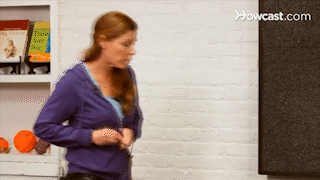
“GOOD BELLA!
HERE IS A TREAT FOR YOU”
AND A PAT ON THE BACK TOO
Go to the animal shelter website, select a dog, fill out some paperwork, and bring it home.—
or, even easier, go to a breeder and choose your favorite, just remember to bring cash.
Whether it is an animal shelter’s printing lists, a digital platform designed for “rehoming,” or a post-it note on the street, there is a multitude of pathways for a dog to enter a new human home —many of which now follow the easy-to-buy model of apps and direct-to-consumer online retail platforms.8
While such designations as “being an adopted dog” or “being a dog bought from the breeder next door” may imply not only a potential influence on the dog’s behavior based on its past experiences but also the human caregivers’ intent to shape the dog's future identity in accordance with societal norms. In essence, the dog, just saved from the kennel —or the breeder's hands, undergoes a process of adjustment to fulfill its designated purpose: An agility dog?9 A petfluencer?10 A hunting dog? Or would it even be capable of fulfilling all those roles?11
Regardless of the dog's intended purpose, its identity is influenced by various factors such as the naming process, mate selection, or determining which commands and tricks are the most suitable to teach it. When those are accomplished, they are often acknowledged through positive reinforcement, often rewarded through verbal treats such as “Good girl!” and “Here's a treat for you!” But those rewards do not exist independently nor in a spontaneous manner. Instead, they are part of command sequences such as “Bella, sit down, paw. Good girl! *Human gives a treat to Bella*”, a setting in which “Bella” is expected to respond to certain commands to please the human and fulfill its requests. And, in the best-case scenario, it gets a snack.
8
James Serpell, on its studies on pet-keeping in Non-Western societies, claims that “in contexts where adequate time and resources are available, pet-keeping arise as an accessible, natural, easy and beneficial product of human social preopensities”.
Serpell, James A. “Pet-Keeping in Non-Western Societies: Some Popular Misconceptions.”
Anthrozoös 1, no. 3 (1987): 166–74
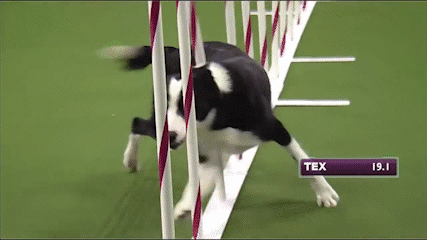
9
Agility dogs are the so-called dogs that compete in agility dog sports. Regardless of their age, size, gender or breed, their main chorus is to be handled through an obstacle course. The roots of this sport go back to 1970 in England, when it was created as a demonstation sport.
OneMind Dogs. “What Is Dog Agility?”
OneMind Dogs. Accessed February 19, 2023
10
By definition, petfluencers are technically humans who post pet-related content on social media platforms, and petfluencers create engaging, educational, and inspirational content that is designed to suit a specific audience.
Green, Adam. “Rise of the Petfluencers: How Instagram-Famous Pets Became Big Business.” Sifted, Accessed September 30, 2022
11
Jack Halberstam, in relation to the place that a companion animal occupies along the side of humans, shares that “its liveliness depends on the ability to pleasure us or to answer to our anthropomorphic call for companionability, in any shape and context we mandate”.
Halberstam, Jack. Wild Things: The Disorder of Desire
(Durham: Duke University Press, 2021)
Who is “Bella”?
Why does “it sit” and “give paw”?
Why does “it sit” and “give paw”?
“Bella” ☞
The name “Bella” is among the most commonly used names for dogs.12
“sit down” ☞
The command “sit down” is typically the first trick that dogs are taught.13
“and give paw” ☞
The request “give paw” involves the dog offering one of its most sensitive body parts to a human.14
12
The Rover blog on companion animals recognizes Bella in the second position of most popular female dog name in a worldwide envision.
Rover, “Top 100 Most Popular Dog Names.” The Dog People. Rover.com, Accessed November 17, 2022
The Rover blog on companion animals recognizes Bella in the second position of most popular female dog name in a worldwide envision.
Rover, “Top 100 Most Popular Dog Names.” The Dog People. Rover.com, Accessed November 17, 2022
13
In Yi-Fu Tuan’s words “The single most important trick taught to a dog is instant obedience to the order "sit" or "lie down, working as a bridge for more complicated commands to happen”
Tuan, Yi-Fu. Dominance & Affection: The Making of Pets (New Haven: Yale University Press, 2016
In Yi-Fu Tuan’s words “The single most important trick taught to a dog is instant obedience to the order "sit" or "lie down, working as a bridge for more complicated commands to happen”
Tuan, Yi-Fu. Dominance & Affection: The Making of Pets (New Haven: Yale University Press, 2016
14
Dog paws are filled with nerve endings, allowing them essential actions such as digging, scratching, walking, and grasping. Since these tasks require a dog to use its paws, that sensitivity triggers the dog's instinct to protect itself and not wanting to have them toucher or manipulated
F. Turner Josie, “Sensitive Dog Paws - Causes and Treatment.” n.d. Animalwised.com. Accessed February 7, 2023
Dog paws are filled with nerve endings, allowing them essential actions such as digging, scratching, walking, and grasping. Since these tasks require a dog to use its paws, that sensitivity triggers the dog's instinct to protect itself and not wanting to have them toucher or manipulated
F. Turner Josie, “Sensitive Dog Paws - Causes and Treatment.” n.d. Animalwised.com. Accessed February 7, 2023
Those terms are part of the daily bread of “Cuido lo que más quieres” — in English “I care for what you love the most,” a company that provides educational and caring services for companion animals in Ciudad Real, Spain —a city with a human population of 74.743 and 17.039 officially registered dogs. Merche, the owner of the business, receives a continual influx of requests for her services.
But what is her reply?
Sorry, we don’t have capacity, we even have a lengthy waiting list.
The notable demand for such services suggests that individuals often seek to outsource the fundamental education of their dogs to enhance their interaction with them. In this context, Merche satisfies the human desire for a well-behaved and obedient “Bella” that adheres to the established norms of dog-to-human interactions.15 Nonetheless, in line with her ethical stance towards dog educational approaches, she also provides instruction on how to place the dog as the subject of human-led command interactions:
15
In HAI research (field of human–animal interaction) dogs are too often operationalized, it is a quiet partner, useful only for the effect their presence has on the person, and rarely considered in and of themselves.
Horowitz, Alexandra. “Considering the ‘Dog’ in Dog–Human Interaction.” Frontiers in Veterinary Science 8 (2021)
“Bella, sit down, paw”: ☞
On the one hand, this phrase indicates the achievement of a successful training process. On the other hand, "Bella" has come to associate these words with her favorite reward: food.
“Good girl! *Human gives a treat to Bella*”: ☞
On one side, it refers to the human’s self-rewarding pat on the back. On the other, it highlights Bella’s motivation for complying with these actions, namely to receive a snack.
“Bella,”
the digital archetype of
“sitting down,” “giving paws,”
and “getting treats.”
the digital archetype of
“sitting down,” “giving paws,”
and “getting treats.”
To commemorate the acclaimed success of those interactions, digital mediums are utilized to increase their reach. With 306M of the 471M companion dogs worldwide digitally exposed twice a week,16 studies suggest that dogs are a driving force behind digital content on social media.
But, where does “Bella” fit into all of this?
Honestly, nothing stands out.
“Bella” is merely another canine in the digital world, performing similar tricks on media platforms such as YouTube, and together with its list of commands, “sit down,”“give paw,”“good girl," it becomes a digital archetype. Despite this, while dog car drivers17 or hypnosis dogs18 occupy the attention of those seeking the most unusual dog performances, looking at videos such as “My Dog Doing Sit and Paw”Fig.2 and “Molly Dog- Sit and Paw”Fig.3 in which there is just a dog performing what could be considered the most basic tricks, seems quite banal.
16
Studies on animal digital exposure have concluded that about 65% of pet owners post about their companion animals on social media an average of two times per week. Considering 65% of the 471M worldwide (only) companion dogs, 306M dogs are exposed twice a week to digital channels.
Nashville, Tenn “New Survey Shows Pets Are Social Media’s Top Dogs (and Cats).” n.d. Better Cities for Pets. Accessed February 2, 2023
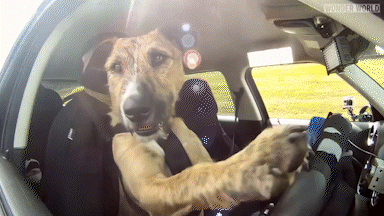
17
Porter, Ginny, and Monte are all rescue dogs in the care of the Auckland Society for the Prevention of Cruelty to Animals. To prove that rescue dogs are just as smart and obedient as nurtured dogs, a trainer found a way to teach these mutts how to operate a specially outfitted Mini Countryman.
TheDrivingDogs. “Meet Porter. the World's First Driving Dog.”
YouTube. YouTube, Accessed November 22, 2023
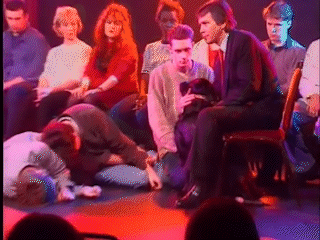
18
Oscar is a black labrador performing as “the Hypnodog”. He was trained by professional hypnotist Hugh Lennon in 1995 to pursue stage hypnosis over humans.
Wikipedia, “Hypnodog.” Wikimedia Foundation,
Accessed September 29, 2022
Fig. 2
@foreveralone7554 “My Dog Doing Sit and Paw.”
n.d. Youtube video. Accessed January 6, 2023.
Fig. 3
@cestrianvlogger. “Molly Dog: Sit and Paw.”
n.d. Youtube video. Accessed January 6, 2023
Do these videos belong to the episodes of dog-training shows that gained widespread popularity among dog communities in the 80s?19
Or do they fulfill the repertoire of David Letterman’s pet parade?20
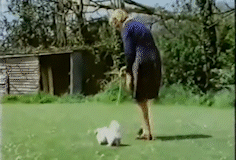
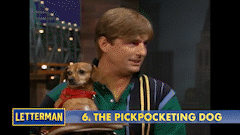
19
Such as the programme “Training Dogs the Woodhouse Way” created by Barbara Woodhouse in 1980 and aired on television by the BBC in 1980. It was taped in 10 episodes at Woodhouse's home in Hertfordshire, England. In the show she often used two commands: "walkies" and "sit".
De Kam, Margot. Barbara Woodhouse met Fifi, 1980"
YouTube, 2019. Accessed December 25, 2022
Such as the programme “Training Dogs the Woodhouse Way” created by Barbara Woodhouse in 1980 and aired on television by the BBC in 1980. It was taped in 10 episodes at Woodhouse's home in Hertfordshire, England. In the show she often used two commands: "walkies" and "sit".
De Kam, Margot. Barbara Woodhouse met Fifi, 1980"
YouTube, 2019. Accessed December 25, 2022
20
David Letterman’s Stupid Pet Tricks was an iconic segment that Letterman did for three decades on NBC’s Late Night and CBS’ Late Show in which a parade of pets performed the most ridiculous, impressive, and extraordinary tricks on a studio stage before a live audience.
Letterman, TheLateShow. “Top Ten Stupid Pet Tricks | Letterman.”
YouTube, Accessed December 26, 2022
David Letterman’s Stupid Pet Tricks was an iconic segment that Letterman did for three decades on NBC’s Late Night and CBS’ Late Show in which a parade of pets performed the most ridiculous, impressive, and extraordinary tricks on a studio stage before a live audience.
Letterman, TheLateShow. “Top Ten Stupid Pet Tricks | Letterman.”
YouTube, Accessed December 26, 2022
Instead, those YouTube videos serve as instruments to showcase the various roles that the character “Bella”can assume, offering a broad comprehension of the diverse connotations that such a familiar set of commands can convey.
The query, therefore, is:
What insights can be gleaned from a seemingly straightforward
sequence of “sit”, “give paw”, “good girl” and “a treat”?
Prior to examining how Mylo, Dakota, Strider, and Bella —the key figures of these videos— may shed light on the question through their actions of "sitting down" and "giving a paw," let's first analyze the process of their selection as the primary roles of the following narratives:
- The videos have been selected while researching on YouTube: “Dog sit down and give paw”
- The selection process did not follow any specific structure, yet the variety and diversity of choices were prioritized to bring different scenarios and perspectives over the reiterated command.
- The actions in each video were carefully monitored to track the particularity of each case and estimate the impact of different contexts and subjects involved. The outcomes of this analysis have been visually summarized at the beginning of each video case. Fig. 5,10,15,20
“Very good boy
knows how to sit down and give paw”: Fig.4
knows how to sit down and give paw”: Fig.4